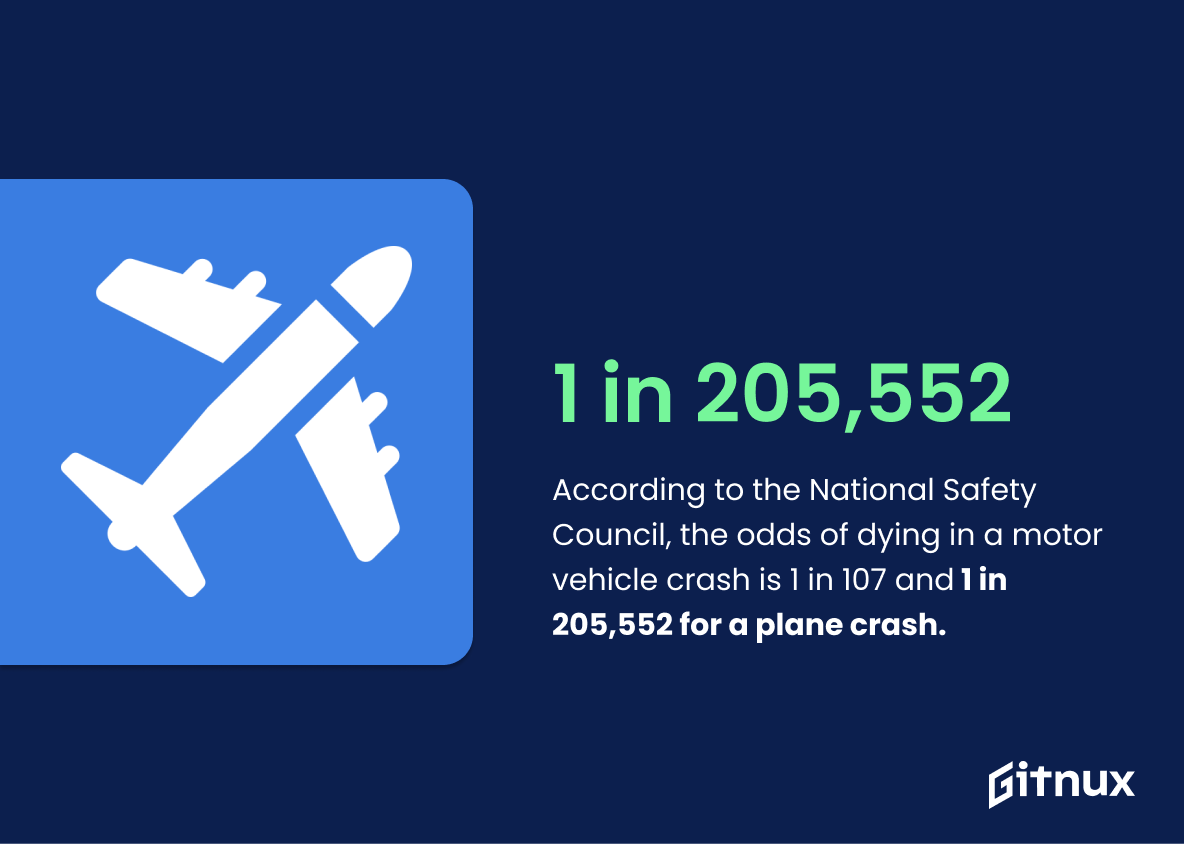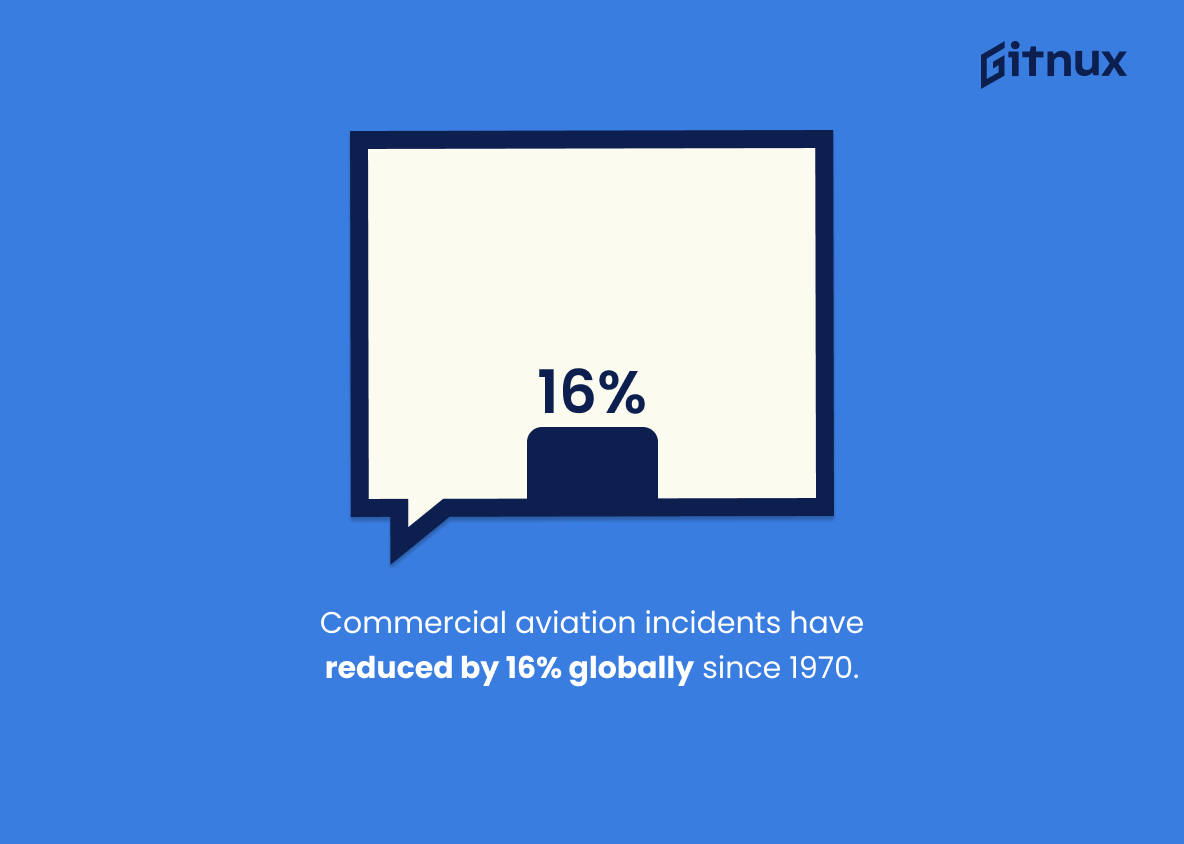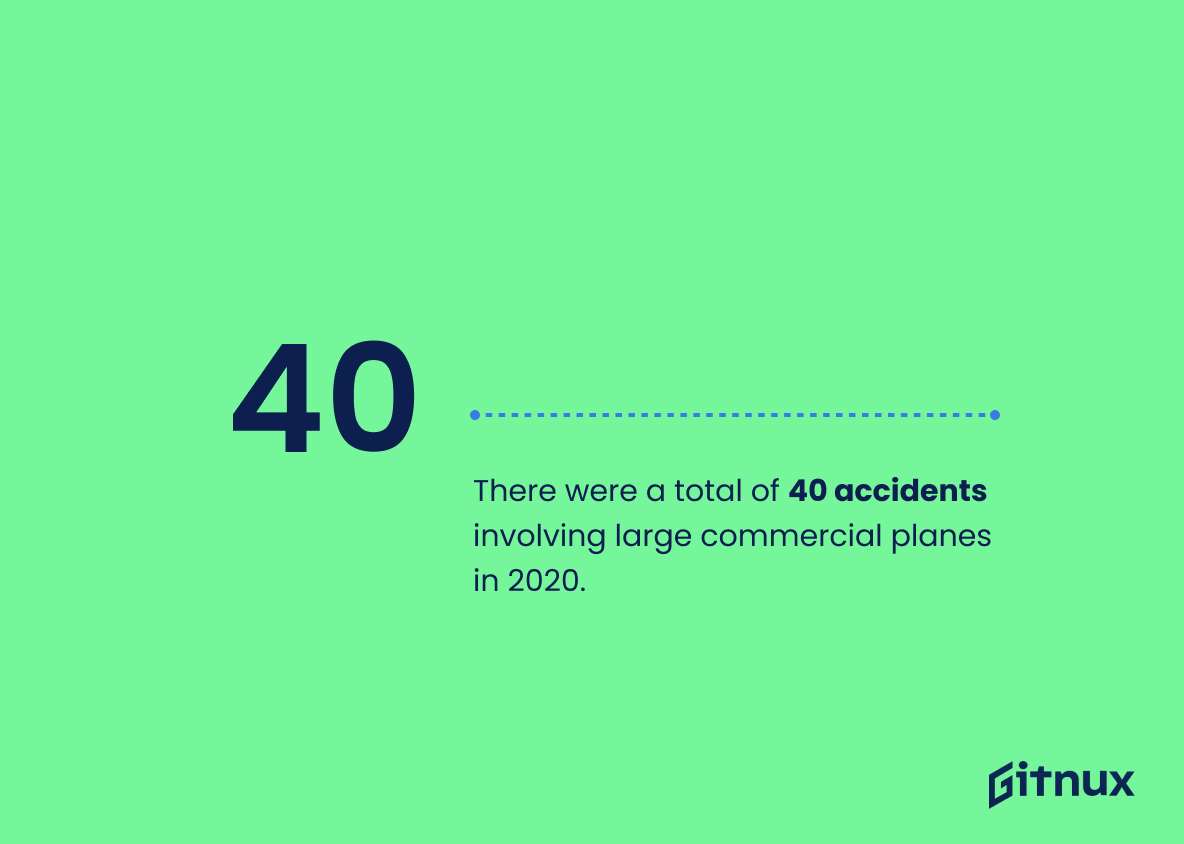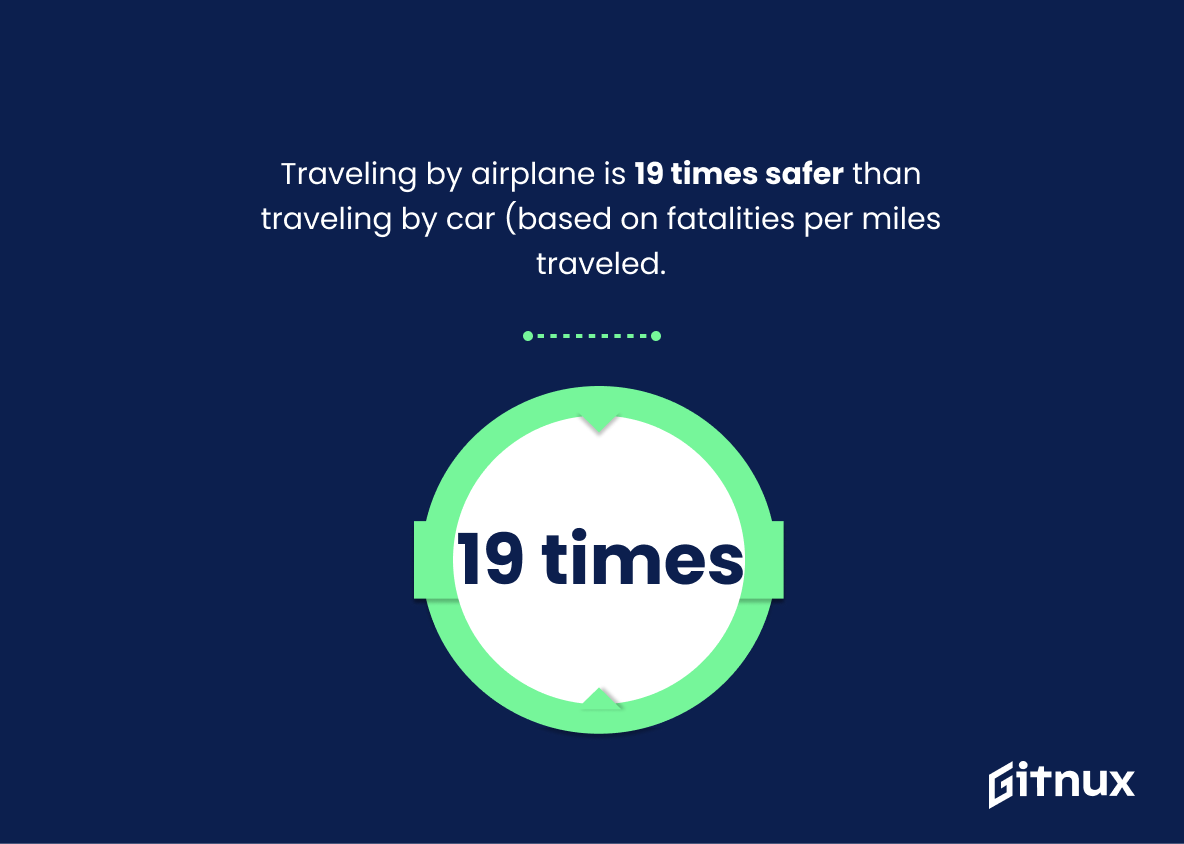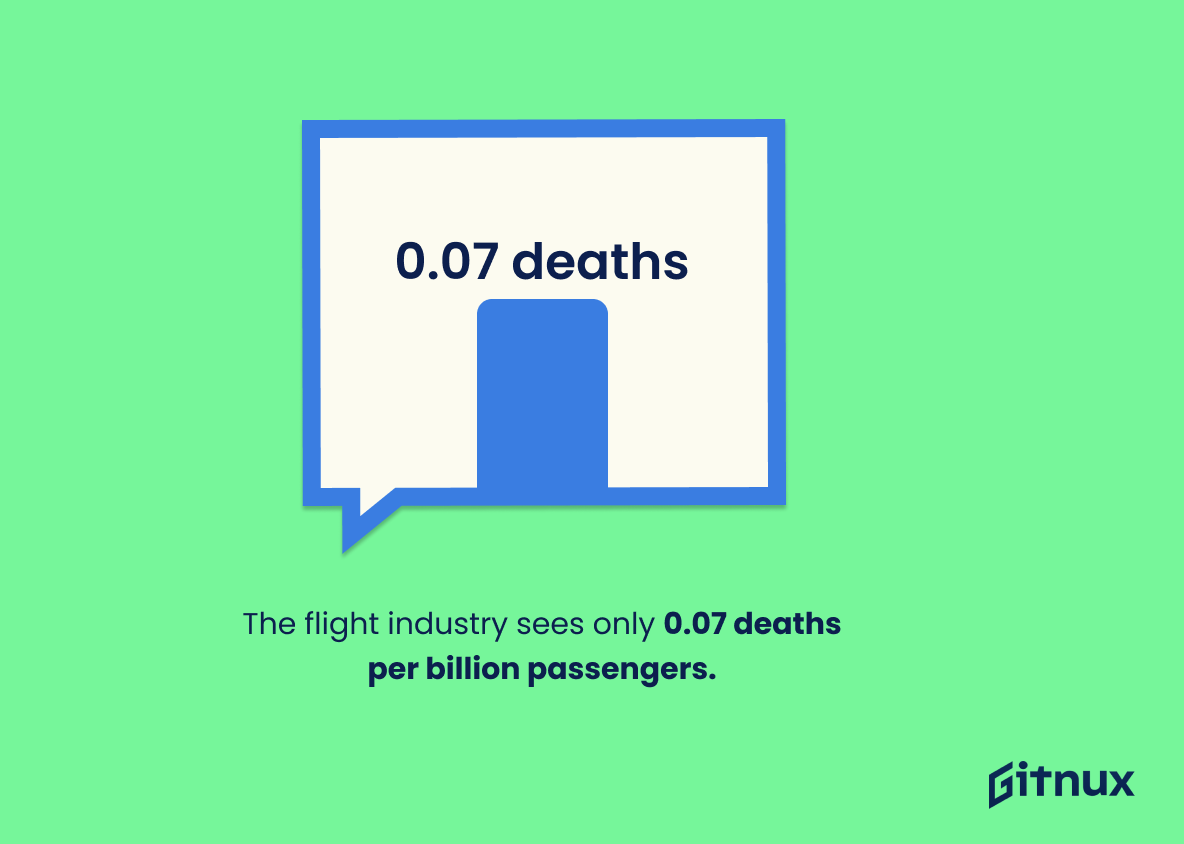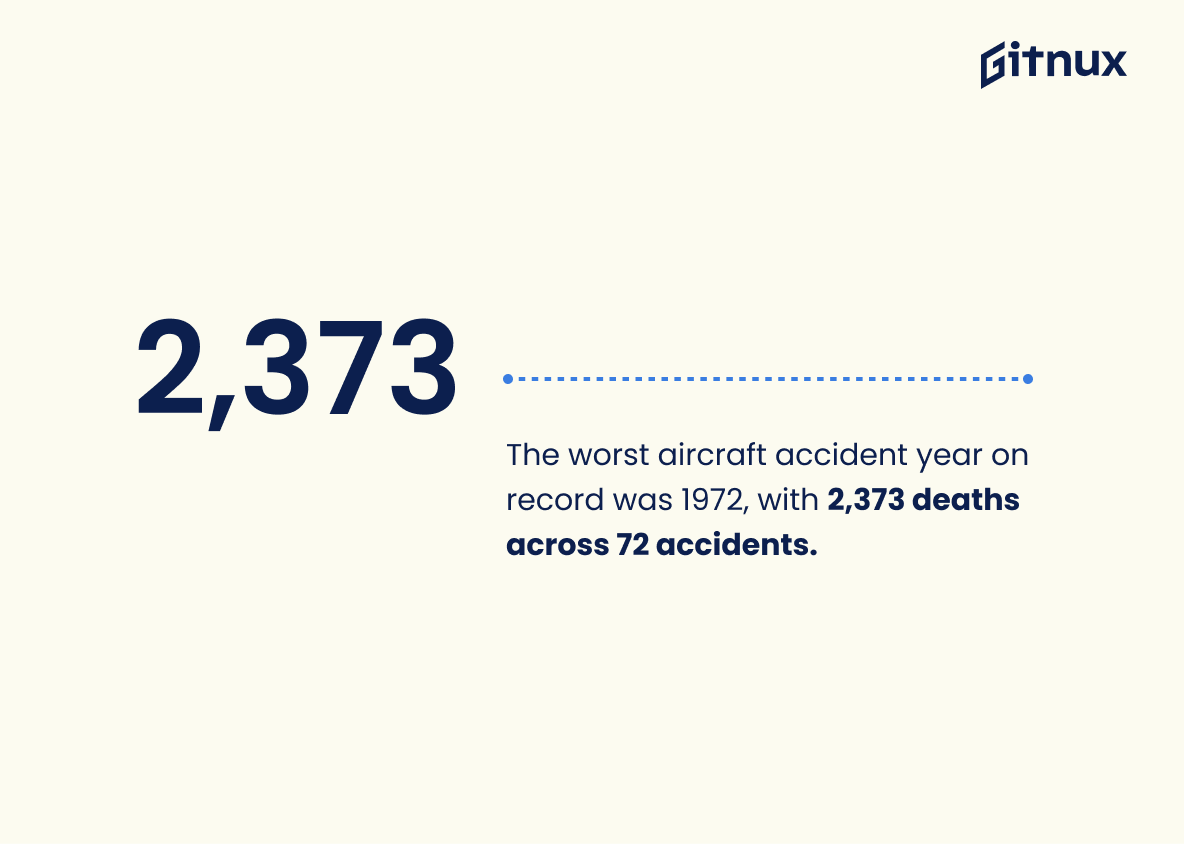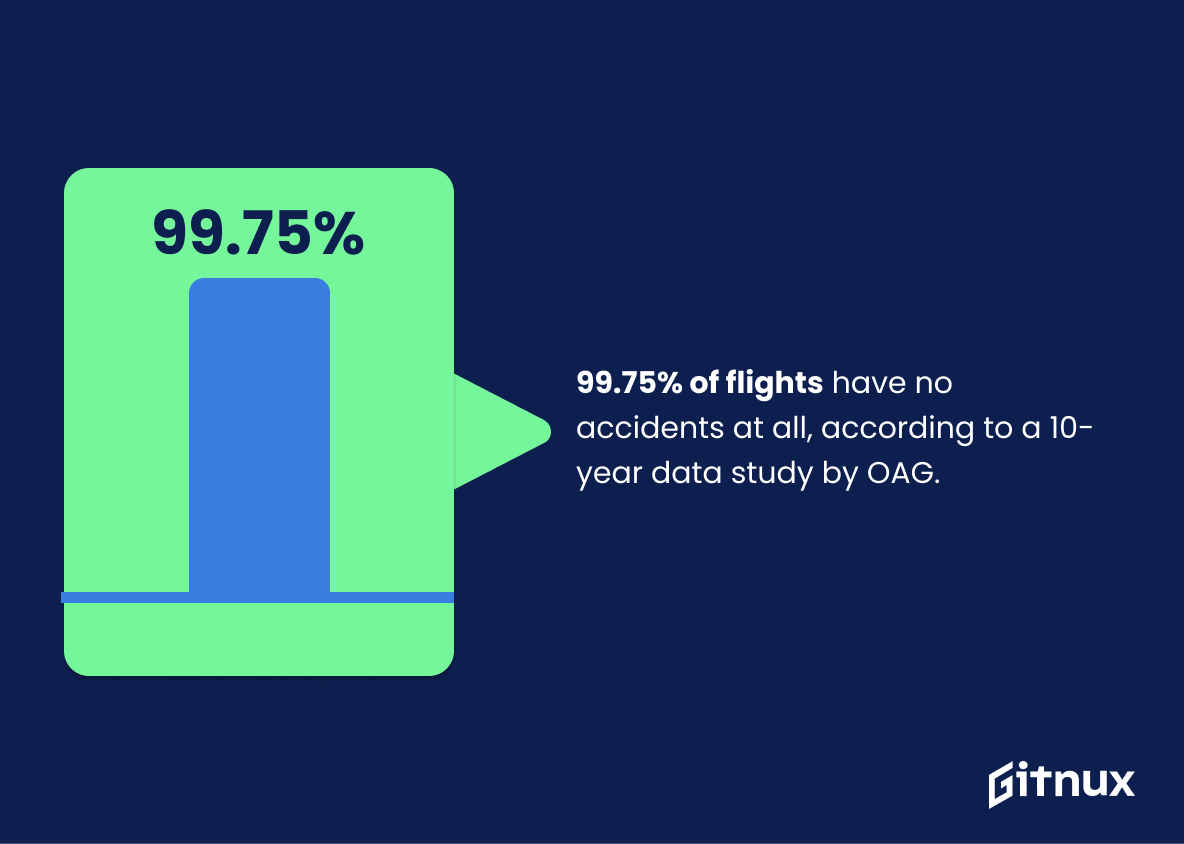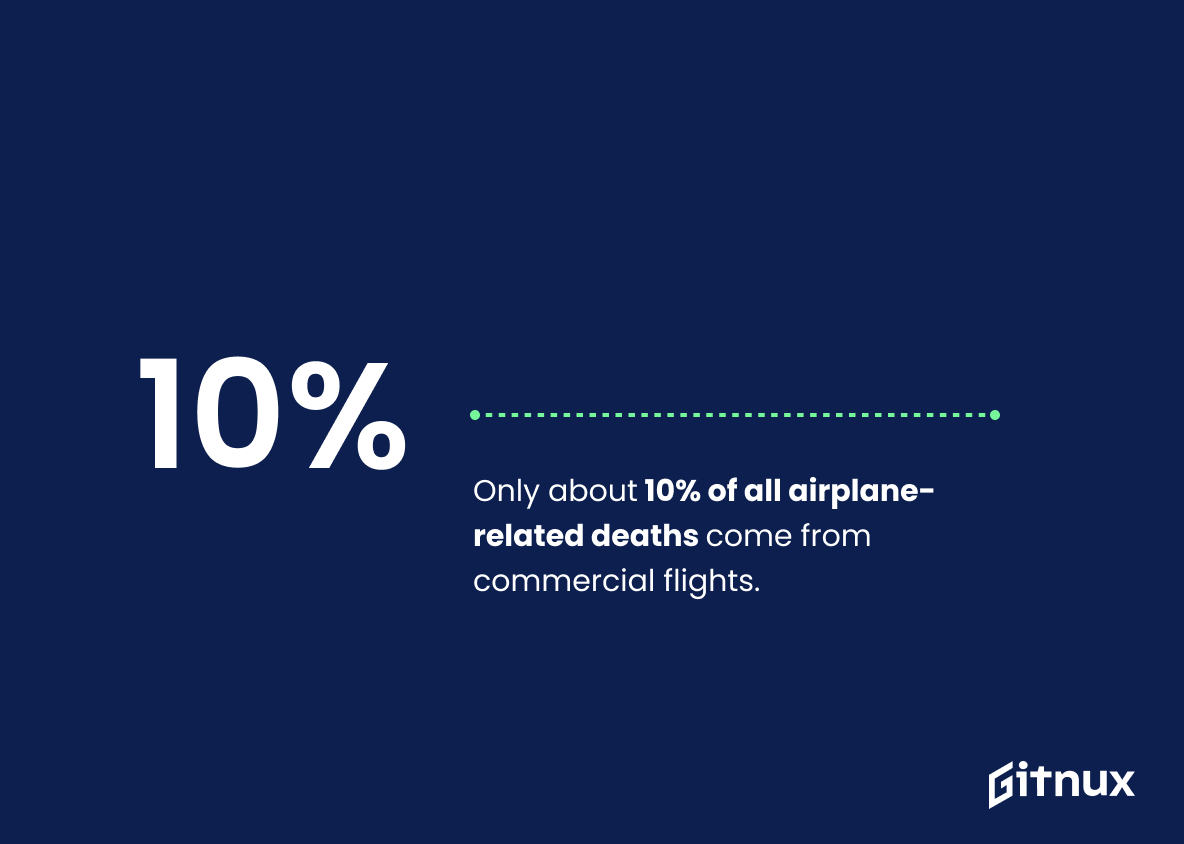Air travel has long been touted as the safest mode of transport, but what do the numbers really tell us? Buckle your seat belts, because in this blog post, we’re about to take off into the world of air travel safety statistics. We’ll delve into the data, debunk some common misconceptions, and help you understand why it’s statistically safer to fly than to take a road trip. From turbulence to airplane malfunctions, we’ll examine the reality behind the fears, backed by real statistics. Sit back, relax, and enjoy your flight into the realm of aviation safety figures.
The Latest Air Travel Safety Statistics Unveiled
“According to the National Safety Council, the odds of dying in a motor vehicle crash is 1 in 107 and 1 in 205,552 for a plane crash.”
This statistic offers a stark perspective on the comparative safety of air travel versus road travel, playing a pivotal role in broadening our understanding. It elucidates that, contrary to popular fear of flying, you are statistically far less likely to meet your end in an airplane than in your own car. In the sea of data that swells within a blog post about Air Travel Safety Statistics, this particular information acts as a lighthouse, guiding readers to an insightful conclusion. By explicitly comparing the dangers of different modes of transport, it challenges baseless anxieties about air travel, and instils an informed confidence in its relative safety. So, when speculating or deciding on your mode of journey, remember to navigate through the fog of fear and let facts form your compass.
“Commercial aviation incidents have reduced by 16% globally since 1970.”
Unfurling the enigma of air travel safety, let us illuminate the fact that commercial aviation incidents have indeed dwindled by 16% across the globe since 1970. Now, this isn’t a mere number encapsulated in a statistic; it is a testament to the triumphs of consistent engineering innovations, rigorous safety protocols and best-in-class training that has been consistently upheld by the aviation industry. It’s truly an emblem of progress spotlighting that our flights have elevated not only in the skies but also in terms of quality and safety. This figure encapsulates a powerful narrative of how our journey in airplanes is becoming ever safer, eroding the tendrils of fear that often surround air travel.
“There were a total of 40 accidents involving large commercial planes in 2020.”
The inclusion of the eye-opening figure, a total of 40 accidents involving large commercial planes in 2020, serves as a compelling touchstone in our exploration of air travel safety statistics. This number shines a spotlight on the relative risks of flying, painting a sobering picture of the potential for mishap in air travel. Even more provocative is the possibility of comparing this statistic with those of previous years or other modes of transport, offering an in-depth look at the changing dynamics and levels of safety in our skies. It invites our readers to engage in a deeper dialogue about what these numbers mean for the future of aviation safety, and what measures can be taken to reduce them even further.
“In 2020, 299 people were fatally injured in plane crashes, compared to 257 in 2019 which was considered one of the safest years on record.”
Emphasizing the existing contrast, the numbers subtly whisper a warning to our sense of safety. While the count of 299 fatalities from plane crashes in 2020 remains relatively low in the grand scheme of human fatalities worldwide, the slight increase from the 257 in 2019, notably one of the safest years for air travel, brings to light a critical reality. It suggests that there still exists a risk in air travel, however minimal it may be.
These figures should not imbue fear or deter us from flying, but rather prop us to reflect on the airplane safety measures, policies, and training. The comparative nature of the numbers from 2020 and 2019 represents the real-time variations in the safety levels within air travel. It inculcates a sense of consciousness about safety standards, potential improvements, and advancements necessary in aviation. Moreover, while highlighting a potential area of concern, it also measures the progress made in reducing air travel related accidents and bolstering safety procedures. The rises and dips in these numbers remind us that safety is not static but a continually evolving aspect in the aviation industry.
Hence, these numeric snippets, plucked from the vast statistical canvas, hold a significant role in discussions around air travel safety. They’re crucial mile markers on the path to an even safer future in the skies.
“Traveling by airplane is 19 times safer than traveling by car (based on fatalities per miles traveled).”
Unveiling the magnitude of air travel’s comparative safety, the fact that “Traveling by airplane is 19 times safer than traveling by car (based on fatalities per miles traveled)” naturally provides an effective anchor point for our conversation on air travel safety statistics. This stunning figure casts a light on the stark and compelling disparity between the perceived risks of flight and its actual substantially lower hazards, paradoxically when pitted against the ubiquity of car travel. This impressive statistic not only reshapes the landscape of safety discourse around different modes of transportation, but it also serves as a vital reassurance to apprehensive flyers of the rigorously upheld safety standards in the aviation industry.
“In 2019, the accident rate was 1 major accident for every 884,000 flights.”
Unveiling the curtain of air travel safety, the statistic reveals a startling truth – in 2019, only one major accident occurred per 884,000 flights. Empowering you with concrete numbers, this data lets you examine the credibility of the commonly-held belief that air travel is one of the safest modes of transportation.
Far from being just a number, this statistic acts as a sentinel of safety in the complex world of aviation. It quantifies the monumental efforts that go into every take-off and landing – the relentless diligence of flight crews, the scrupulous design of aircraft, and the strict enforcement of maintenance schedules.
So, the next time your heart skips a beat during turbulence, take solace in this statistic; it underscores a reality obscured by the fear of flying. Even amidst the immense sky, you are embraced by layers of safety measures, meticulously calculated flight paths and the professionalism of the dedicated individuals that land these metal birds day in, day out. This impressive figure is the silent comfort you never knew you had while cruising tens of thousands of feet above.
“The flight industry sees only 0.07 deaths per billion passengers.”
Integrating this engrossing bit of data – the infinitesimal rate of 0.07 deaths per billion passengers – cast an intriguing light on the narrative of air travel safety. In the vast cosmic jigsaw of flight-related statistics, this slender strand of information serves as a reassurance beacon, emphasizing that the chances of losing one’s life in a flight catastrophe is exceptionally rare. Visitors perusing air travel safety assessments may feel a comforting rush of relief as this figure, placing themselves amidst its rarity, should significantly put to rest any latent fears surrounding air travel.
“The worst aircraft accident year on record was 1972, with 2,373 deaths across 72 accidents.”
Drawing attention to the alarming figure from 1972, where a staggering 2,373 lives were tragically lost in 72 accidents, underscores the critical historical landmark in the domain of air travel safety. This grim highpoint serves as a compelling backdrop, prompting significant changes and technological advancements in the field to prevent such catastrophic occurrences. Channeling this past experience, the aviation industry has made strides to tighten safety protocols, ensuring that air travel today is more secure than ever, highlighting the transformative journey from the perils of the past to the security of the present.
“99.75% of flights have no accidents at all, according to a 10-year data study by OAG.”
Anchoring this assertion in the story of air travel safety, the given statistic serves as a remarkable testament to the prodigious strides the industry has made concerning safety. Riding on the wings of significant enhancements seen in technology, rigorous safety protocols, and steadfast commitment to continuous improvements, it conveys an astounding finding – 99.75% of flights have perfected the art of tracing the sky without bearing witness to any accidents. Over a ten year span, as OAG’s study confirms, this statistic vividly paints a picture of air travel as not just a convenience, but a dependable ally for journeying across great distances. Thus, by underscoring this extensive safety record, readers are invited to take confidence in the latent promise of air travel, aiding in dispelling myths of flying, and establishing a paradigm where safety meets the skies.
“Between 2012 and 2016, less than 13% of accidents were fatal.”
Taking an aerial perspective on the canvas of air travel safety, the hue that truly stands out is the data brushstroke highlighting that between 2012 and 2016, less than 13% of accidents resulted in fatalities. This is not just a number, it’s a testament to the relentless efforts of aviation experts to ensure flight safety. It provides potential passengers with a comprehensive, data-driven reassurance that air travel, despite the speed and altitude involved, largely leads to non-fatal outcomes when incidents do occur. The figure conveys insights on the meticulous engineering, stringent regulations, and rigorous training that go into making air travel one of the safest modes of transportation. Thus, it underlines the point of our blog post—air travel is not just about soaring in the sky; it’s also about grounded facts and figures attesting to safety.
“The geographical region of Africa has the highest aircraft accident rates worldwide.”
Highlighting the aircraft accident rates in Africa serves as an essential touchstone in the discussion of air travel safety statistics, casting a spotlight on the urgent need for safety improvements in the region. It’s a stark reminder for stakeholders, from airlines to aviation bodies and policy makers, to prioritize safety protocols and educational reforms. This statistic paints a sobering image of the present conditions, potentially driving meaningful conversations towards the enhancement of global air travel safety standards. It furthermore provides key insights for all involved in the travel industry and reminds travellers to exercise increased vigilance when booking their flights.
“The death rate for air travel is 0.07 deaths per billion journeys.”
Setting the stage with a riveting perspective, one might essentially look at the statistic “The death rate for air travel is 0.07 deaths per billion journeys.” as a core pillar of any discourse on air travel safety. The number breathes life into the discussion, not merely because of its chilling crispness, but also due to the direct acuity it offers.
This quantification exhibits power. It is the manifestation of a comprehensive examination of all journeys taken across the globe and the grim, albeit rare, fatalities occurring therein. It emerges as a beacon of assurance, illuminating the immense progress aviation safety has made over the years. It’s a subtle testament to the tremendous mechanistic finesse and navigational surety impeccable flight operations boast today.
Moreover, its incredibly minuscule magnitude paints an encouraging picture for apprehensive travelers around the world. Air travel, often mired in risks and uncertainties, is, in fact, safe to a phenomenal extent, and this small number serves as a powerful weapon to dispel fear and foster confidence.
In a nutshell, with this compelling figure, the blog post doesn’t merely provide a random array of facts. Instead, it imparts measurable, verifiable evidence of the relative safety of air travel, driving home the point that flying is indeed a reliable mode of transportation.
“Only about 10% of all airplane-related deaths come from commercial flights.”
Highlighting this stat throws light on a significant, yet often overlooked aspect of air travel safety. It draws a distinct line between commercial and non-commercial flights, painting a reassuring picture for those frequently hopping onto commercial planes. By realizing that 90% of aircraft-related fatalities aren’t associated with commercial flights, the anxiety around air travel may perceptibly decrease, encouraging the readers to contemplate air travel with a renewed sense of confidence. Moreover, it silently substantiates the stringent safety measures that commercial aviation agencies adhere to, instilling a sense of trust amongst prospective passengers.
“The annual risk of being killed in a plane crash for the average American is about 1 in 11 million.”
Emphasizing the above statistic in an Air Travel Safety Statistics blog post brilliantly illuminates the actual scale of aviation safety, serving as an assurance and catalyst that could potentially transform the fear-stricken perspectives of anxious flyers. Offering a counterpoint to commonly held beliefs around safety risks, this figure debunks the myth of frequent fatal accidents, spotlighting air travel’s excellent track record. Drawing from a comparison standpoint, the extraordinary low odds—1 in 11 million—significantly dwarf many risks we casually undertake every day. By integrating this compelling statistic, the blog post not only dispels distractive paranoia but also provides a solid foundation for an informed, data-driven apprehension of aviation safety.
“Global airlines carried 4.5 billion passengers in 2019, a new record, without a single passenger death.”
Illuminate your understanding of air travel safety levels by contemplating on the impressive statistic that global airlines transported an unprecedented 4.5 billion passengers in 2019 and not a single passenger life was claimed. Not only does this eye-opening figure mark a milestone in how vastly airline services are being utilized globally, but it also resounds affirmatively in terms of the impeccable safety records upheld by these international airlines. Such a reassuring statistic helps shatter perceived notions of air travel being dangerous and positions it convincingly as a safe mode of transport, evidencing that airlines are investing and succeeding in ensuring maximum passenger safety, making each journey not just about reaching the destination, but also about the safe and sound journey there.
“The survival rate of plane crashes from 1983-2000 was 95.7%.”
Featuring prominently in a blog post about Air Travel Safety Statistics, the remarkable figure of a 95.7% survival rate in plane crashes from 1983-2000 carries undeniable weight. It eloquently rebuffs common misconceptions nurtured by media amplification of tragic incidents. This powerfully persuasive statistic injects a healthy dose of realism into discussions about the risks associated with air travel, simultaneously alleviating anxieties and quelling unfounded fears. With its illuminating insight, the statistic affirms the resilience and success of safety measures implemented in the aviation industry, serving to reassure readers and prospective air travellers of their actual chances of survival in the rare event of an air accident. In essence, it paints an accurate, encouraging image of air safety, proving that taking to the skies is generally a safer option than often perceived.
Conclusion
In summary, the remarkable advancements in aviation technology and rigorous safety protocols have significantly enhanced air travel safety. Today’s airlines have put an immense emphasis on ensuring passenger safety, as reflected in the steadily declining accident rates and consistently improving safety statistics. While the relative chances of an incident occurring during flight remain infinitesimally small, vigilance is never to be compromised. By understanding the air travel safety statistics, passengers can make informed decisions and fly with peace of mind. The combination of strict regulatory standards and progressing technological feats only promises to make the future of air travel even safer.
References
0. – https://www.injuryfacts.nsc.org
1. – https://www.www.internationalairportreview.com
2. – https://www.www.skybrary.aero
3. – https://www.www.businessinsider.com
4. – https://www.www.baatraining.com
5. – https://www.www.independent.co.uk
6. – https://www.www.vox.com
7. – https://www.www.ntsb.gov
8. – https://www.www.nytimes.com
9. – https://www.www.bbc.com
10. – https://www.www.airsafe.com
11. – https://www.www.easa.europa.eu
12. – https://www.fortune.com
13. – https://www.www.nsc.org
14. – https://www.www.theguardian.com
15. – https://www.www.oag.com
